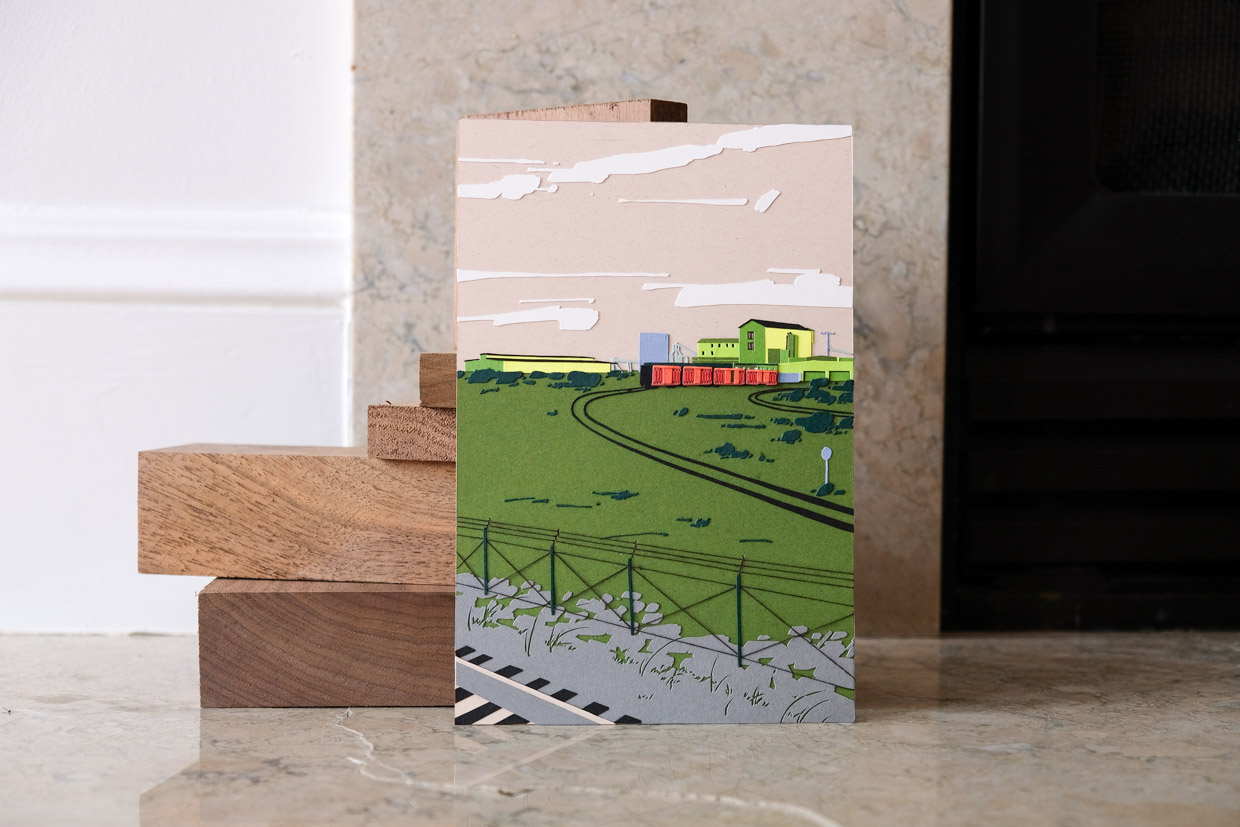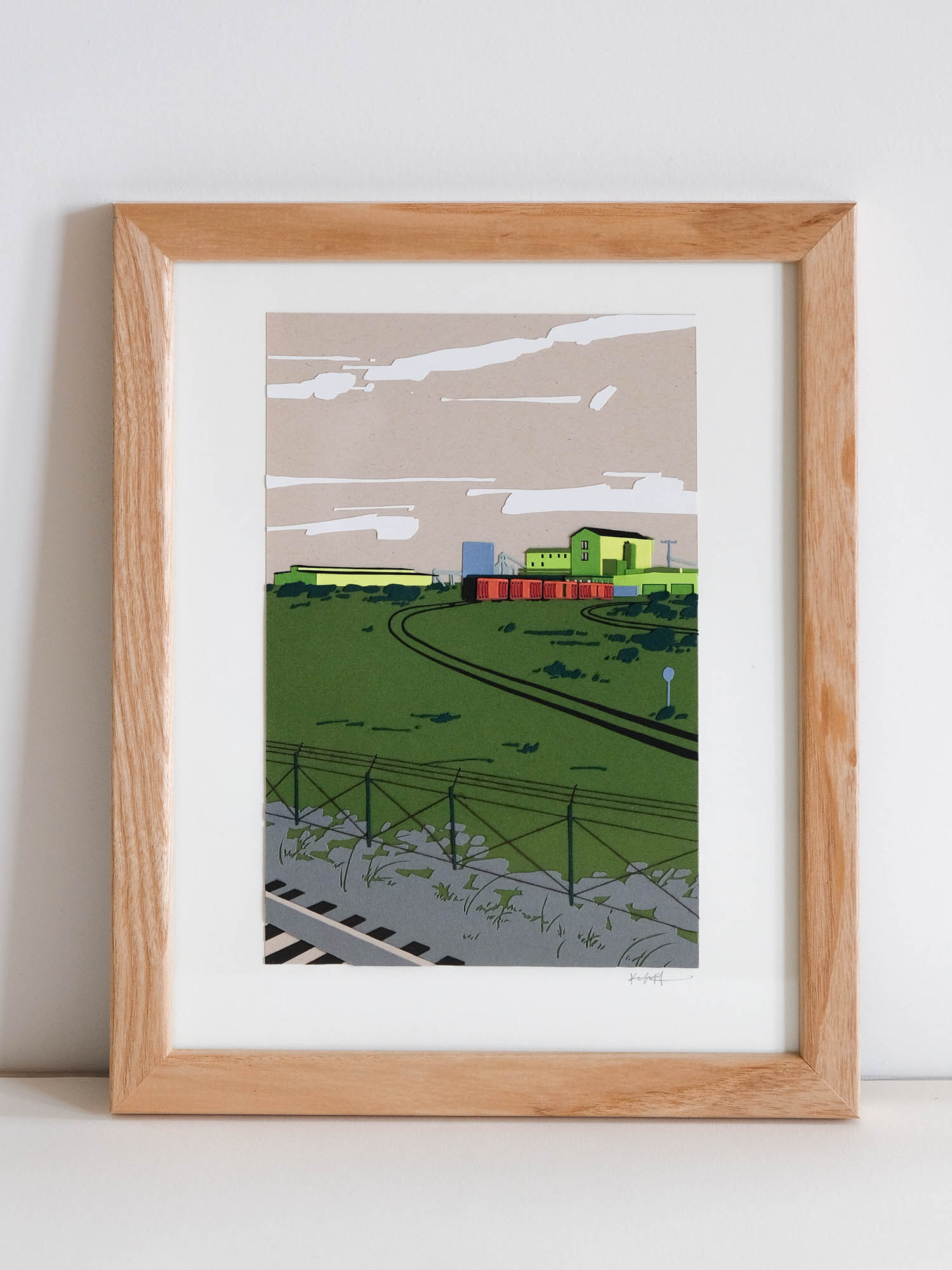(07.27.2024)
Central Coast No. 2
Dimensions
5.25″ × 8″
Materials
Cover-weight paper stock; black and red thread; acid-free paper adhesive




On another leg of my Central Coast journey, we traveled though a vast field of wild mustard and cow-parsnip. Other than the intermittent palm trees, it seemed as if there was nothing else between us and the distant, hazy hills barely visible on the horizon. This was mother nature’s dominion. She was graciously allowing us to pass through her meadows.
But eventually, signs of human enterprise flew into view. First it was the electrical poles, strung along with thick black cables at regular intervals. Then came the wire fences. Then suddenly, railroad tracks wove into view, diverging and converging in long, sinuous movements. It didn’t take long for the silos and massive industrial buildings to take over the horizon. Where there were once unending fields of blooms, there was no flora left except for dried grasses and scrubby brush.
How typical for humans to claim ownership of rich lands, squeezing it for profit until a withered husk is left. I was sad to see nature’s beauty overwritten by such blind ambition. Even if there was a strange, nostalgic charm in this view of warehouses and metallic surfaces, it couldn’t compare to what had come long, long before. Now we had nothing left but tarmac, gravel, metal, and weeds.
Maybe one day, nature will take back what is rightfully hers.